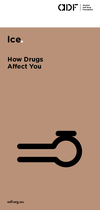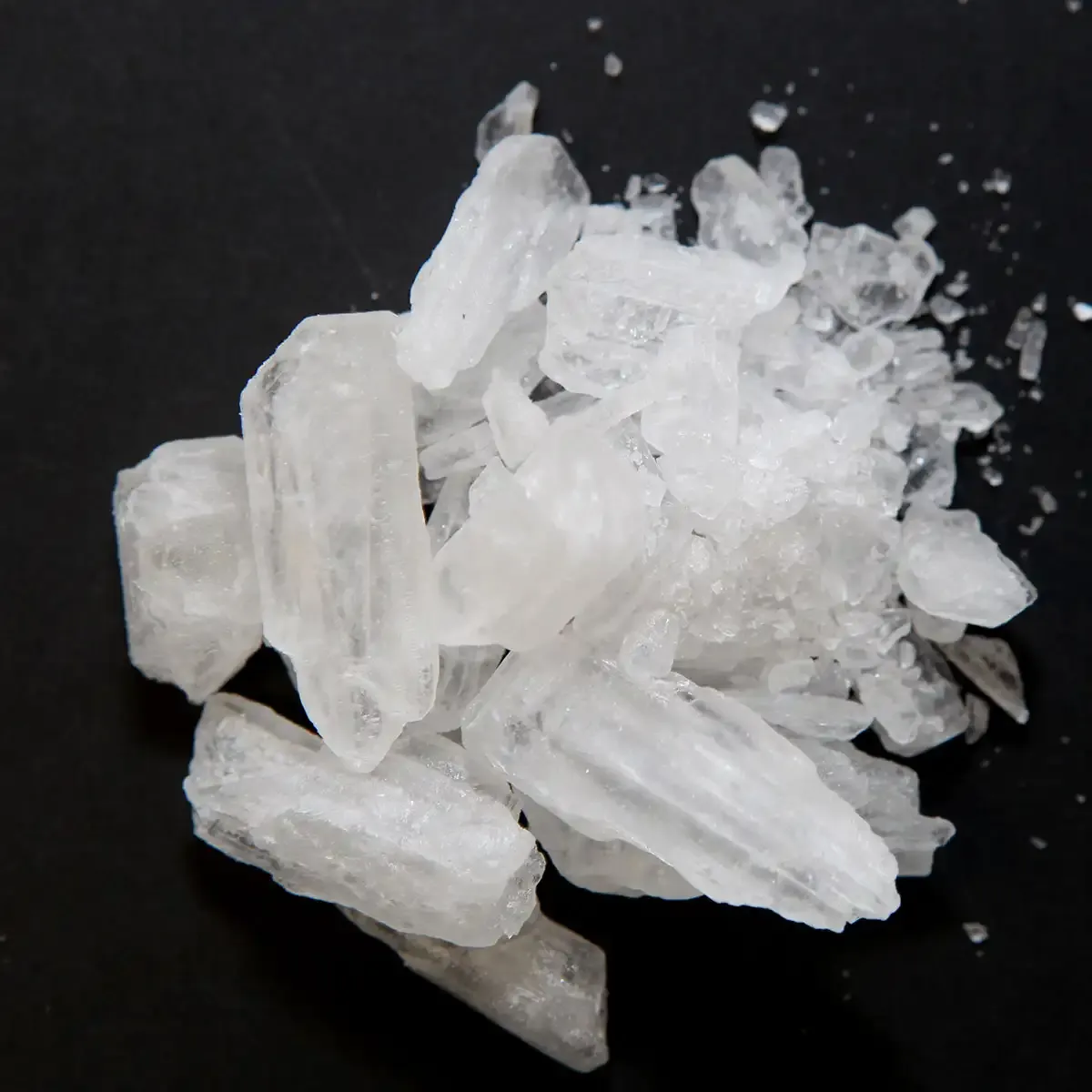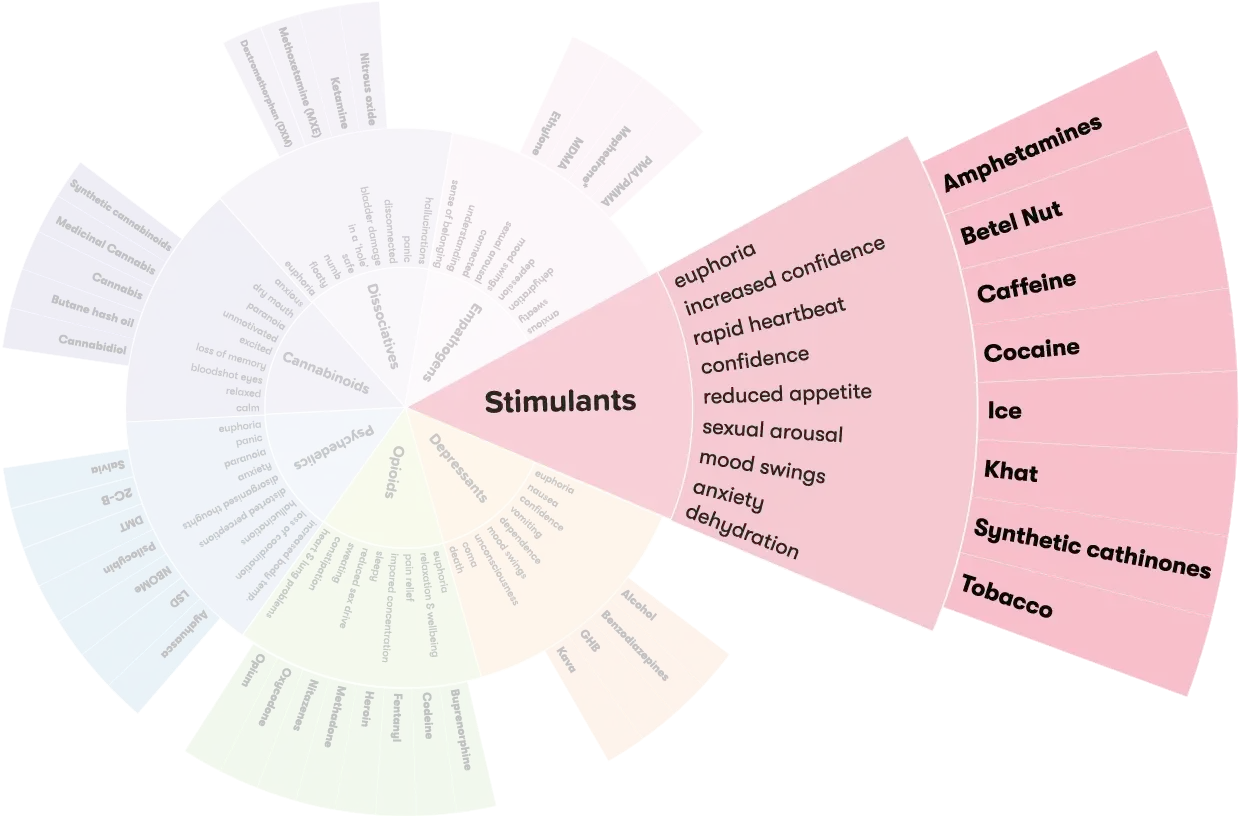
Ice: How drugs affect you (bundle of 50)
Pamphlets
$36.32 (inc. GST)
View in ADF Shop
How is ice used?
Ice is generally smoked (effects felt almost immediately) or injected (15 to 30 seconds to feel the effects). It’s sometimes swallowed (15-20 minutes to feel the effects) or snorted (three to five minutes to feel the effects). 4
Effects of ice
Use of any drug can have risks. It’s important to be careful when taking any type of drug.
The effects of ice can last up to 12 hours2 but it might be hard to sleep for a few days after using the drug.
Ice affects everyone differently, based on:
- size, weight and health
- whether the person is used to taking it
- whether other drugs are taken around the same time
- the amount taken
- the strength of the drug (varies from batch to batch)
- the environment (where the drug is taken).
Effects may include:
- feelings of pleasure and confidence
- increased alertness and energy
- enlarged pupils and dry mouth
- teeth grinding and excessive sweating
- fast heart rate and breathing
- reduced appetite
- repeating simple things like itching and scratching
- increased sex drive1,4-6
If injecting drugs, there is an increased risk of:
- tetanus
- infection
- vein damage.
If sharing needles, there is an increased risk of:
- hepatitis B
- hepatitis C
- HIV and AIDS.1
Snorting ice can damage the sinuses and cause nose bleeds.
Impact of mood and environment
Drugs that affect a person’s mental state (psychoactive drugs) can also have varied effects depending on a person’s mood (often called the ‘set’) or the environment they are in (the ‘setting’):
- Set: a person’s state of mind, previous encounters with ice, and expectations of what’s going to happen. For example, feelings of anxiety or agitation before using ice may result in an unpleasant experience and make those feelings worse.7
- Setting: the environment in which someone consumes ice – whether it’s known and familiar, who they’re with, if they’re indoors or outdoors, the type of music and light. For example, using ice in a calm, quiet and relaxed environment can lead to, or contribute to, a pleasant experience but being in a noisy, crowded place may result in a negative experience.7
Overdose
If you take a large amount, or have a strong batch, you could overdose.
Ice can cause death. Call an ambulance straight away by dialling triple zero (000) if you, or someone else, has any of the following symptoms (Emergency services are there to help and can provide instructions over the phone):
- racing heartbeat and chest pain
- breathing problems
- fits or uncontrolled jerking
- extreme agitation, confusion, clumsiness
- sudden, severe headache
- unconsciousness
- stroke or heart attack.1,6,8
Coming down
It can take several days to come down from using ice. The following effects may be experienced:
- difficulty sleeping and exhaustion
- headaches, dizziness and blurred vision
- paranoia, hallucinations and confusion
- irritability and feeling ‘down’1,6
Using depressant drugs such as alcohol, benzodiazepines or cannabis to help with the come down effects may result in a cycle of dependence on both types of drugs.
Long-term effects
Regular use of ice may eventually cause:
- extreme weight loss due to reduced appetite
- restless sleep
- dry mouth and dental problems
- regular colds or flu
- trouble concentrating
- breathlessness
- muscle stiffness
- anxiety, paranoia and irritability
- depression
- heart and kidney problems
- increased risk of stroke
- needing to use more to get the same effect
- dependence on ice
- financial, work or social problems6,9
Ice and mental health
Some people who regularly use ice may start to lose enjoyment of everyday activities. They can get stressed easily and experience mood swings. These changes can lead to longer-term anxiety and depression. These effects can last for several weeks or even months after someone gives up ice.10
Tolerance and dependence
People who regularly use ice can quickly become dependent on the drug. They may feel they need ice to go about normal activities like working, studying and socialising, or just to get through the day. They may also develop a tolerance to it, which means they need to take larger amounts of ice to get the same effect.1,5
Drug-induced psychosis
Individuals may develop drug-induced psychosis when using stimulant drugs like ice at high doses or for extended periods. This psychological condition is characterised by people experiencing strange beliefs, paranoia, experiencing things that may not be there, and potentially exhibiting unpredictable behaviour. These symptoms usually disappear a few days after the person stops using ice.1,11
Lung health
Smoking ice has been associated with a range of lung complications. This includes coughing, wheezing, difficulty breathing and coughing up blood. The smoking of methamphetamine may cause or increase the symptoms of asthma. It has also been shown to increase the risk of developing emphysema.12
Mixing ice with other drugs
Mixing ice with other drugs can have unpredictable effects and increase the risk of harm.
- Ice and alcohol: can make you feel less drunk and lead to drinking more, which increases risk of alcohol poisoning.
- Ice and cocaine: can make you feel anxious and also put a lot of pressure on your heart, which can lead to stroke.
- Ice and GHB/heroin/benzos: ice speeds up your heart rate, while GHB/heroin/benzos all slow it down, masking the effects of each other. Depending on how much you take, you could overdose on either drug if one wears off before the other.3,13,14
Use of more than one drug or type of drug consumed at the same time is called polydrug use.12
More on Polydrug use
Polydrug use is a term for the use of more than one drug or type of drug at the same time or one after another. Polydrug use can involve both illicit drugs and legal substances, such as alcohol and medications.
Reducing harm
There are ways in which you can reduce the risks associated with using ice:
- Try a little bit first up to test how strong it is and how you react before using more
- Try not to use every day and plan a time to sleep and rest
- Try to eat healthy meals regularly even if you are not hungry
- Stay hydrated. People can become dehydrated when using ice, it is important to take small sips of water regularly
- If using a smoking device, boil in hot water to keep it clean.
- If injecting, always use new needles, don’t share needles and always wash your hands
- Don't drive or operate machinery after using.3,13
Withdrawal
Giving up ice after a long time is challenging because the body has to get used to functioning without it. Please seek advice from a health professional.
Withdrawal symptoms generally settle down after a week and will mostly disappear after a month. Symptoms include:
- cravings for ice
- increased appetite
- confusion and irritability
- aches and pains
- exhaustion
- restless sleep and nightmares
- anxiety, depression and paranoia.15
Getting help
If your use of ice is affecting your health, family, relationships, work, school, financial or other life situations, or you’re concerned about someone else, you can find help and support.
Call the National Alcohol and Other Drug Hotline on 1800 250 015 for free and confidential advice, information and counselling about alcohol and other drugs
Help and Support Services search
Find a service in your local area from our list. Simply add your location or postcode and filter by service type to quickly discover help near you.
If you're looking for other information or support options, send us an email at druginfo@adf.org.au
Path2Help
Not sure what you are looking for?
Try our intuitive Path2Help tool and be matched with support information and services tailored to you.


Ice: Family and Friends Support Guide (bundle of 25)
Pamphlets
$20.00 (inc. GST)
View in ADF Shop
Use of methamphetamine (ice) is against the law. Australian Federal and state laws provide penalties for possessing, using, making, selling, importing or exporting, or driving under the influence of methamphetamine.
The importation or exportation and the procuring of precursor drugs (such as pseudoephedrine) with the intention of manufacturing a controlled drug, is also against the law. Laws have been introduced that prevent the sale and possession of ice pipes in some states and territories.16
National
- 5.8% of Australians aged 14 years and over have used meth/amphetamines one or more times in their life.17
- 1.3% of Australians aged 14 years and over have used meth/amphetamines in the previous 12 months. Of these people, 50% report crystal or ice as the main form of meth/amphetamines used.17
Young people
- Young Australians (aged 14–24) first try meth/amphetamines at 20 years of age on average.17
- 2% of 12-17 year olds have ever tried methamphetamines.18
- Campbell A. The Australian Illicit Drug Guide: Every Person's Guide to Illicit Drugs--Their Use, Effects and History, Treatment Options and Legal Penalties: Black Inc; 2001 [07.02.2023].
- National Drug and Alcohol Research Centre. Methamphetamine 2016 [08.11.2023].
- Harm Reduction Victoria. Ice [15.03.2023].
- National Institute on Drug Abuse. How is methamphetamine misused? 2019 [08.11.2023].
- Brands B, Sproule B, Marshman J. Drugs and Drug Abuse. Toronto: Addiction Research Foundation; 1998 [22.02.2023].
- Leonard W Dowsett G Slavin S Mitchell A & Pitts M. Crystal clear: the social determinants of gay men’s use of crystal methamphetamine in Victoria. Melbourne Australian Research Centre in Sex, Health & Society; 2008 [08.11.2023].
- Nutt D. Drugs without the hot air : making sense of legal and illegal drugs. Cambridge: UIT Cambridge Ltd; 2012 [10.10.2023].
- Roxburgh A & Burns L. Cocaine and methamphetamine related drug-induced deaths in Australia 2013 [08.11.2023].
- Lappin J Darke S & Farrell M. Stroke and methamphetamine use in young adults: a review. Journal Neurol Neurosurg Psychiatry [Internet]. 2017 [08.11.2023]; 88:[1079–91 pp.].
- Stuart A, Baker AL, Bowman J, McCarter K, Denham AMJ, Lee N, et al. Protocol for a systematic review of psychological treatment for methamphetamine use: an analysis of methamphetamine use and mental health symptom outcomes. BMJ Open [Internet]. 2017 [08.11.2023]; 7(9).
- Wearne TA, Cornish JL. A Comparison of Methamphetamine-Induced Psychosis and Schizophrenia: A Review of Positive, Negative, and Cognitive Symptomatology.Frontiers in psychiatry [Internet]. 2018 [08.11.2023]; 9:[491 p.].
- Tucker JA, Darke, S, Lappin, J, Farrell, M. The Clinicians Guide to Illicit Drugs and Health: Silverback Publishing; 2019 [26.10.2023].
- Psychonaut Wiki. Methamphetamine 2022 [cited: 15.03.2023].
- Hi-ground. Methamphetamine [24.05.2023].
- Cracks in the Ice. How does crystal methamphetamine work? 2021 [08.11.2023].
- Australian Injecting and Illicit Drug Users League. The Law and Your Rights 2021 [08.11.2023].
- Australian Institute of Health and Welfare. National Drug Strategy Household Survey 2019 Canberra: AIHW; 2020 [11.04.2023].
- Guerin N, White V. ASSAD 2017 Statistics & Trends: Australian Secondary Students’ Use of Tobacco, Alcohol, Over-the-counter Drugs, and Illicit Substances Centre for Behavioural Research in Cancer: Cancer Council Victoria; 2018 [03.05.2023]. 92].

